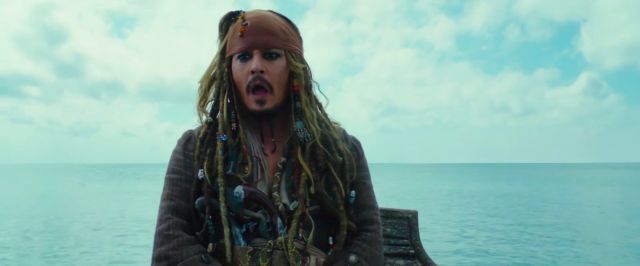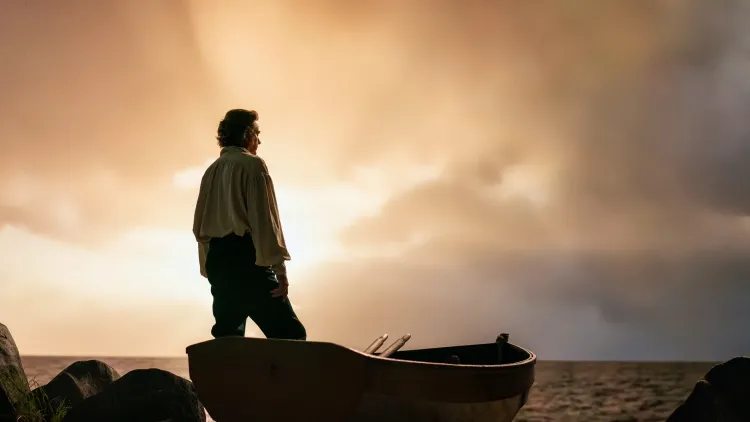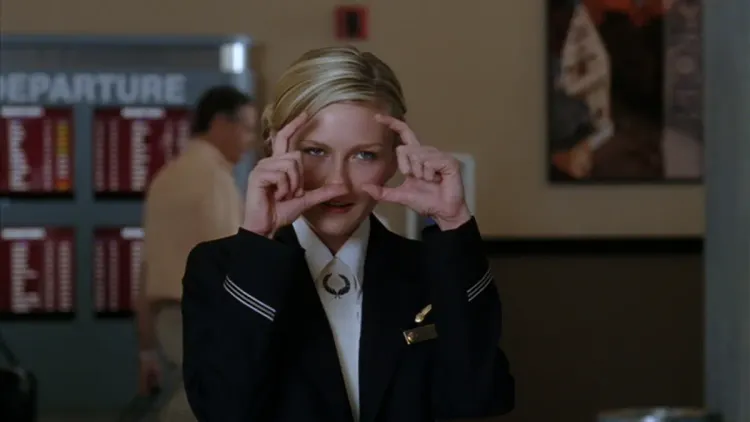Episodes: Effect-cause


Toward the end of Pirates of the Caribbean: Dead Men Tell No Tales, a movie I mostly hated, I realized that I often had no clue why characters were doing things. I could venture guesses. I could tell what the movie wanted me to think. But I could never quite pin down something as concrete as a, "I am doing this big thing now because of this."
Look at it this way: Think about why Indiana Jones takes any action in any Indiana Jones movie (yes, even Crystal Skull, which is underrated). You always know why, right? Even if you disagree with it? When he tells Marion to close her eyes as the Nazis open the Ark of the Covenant, you can't exactly tell why he's telling her that, but you can hazard a few guesses. The movie has led you that far. And the big mystery of that movie is "Is what's in the Ark going to make the Nazis an unstoppable war machine?" So this is a moment where Steven Spielberg could play the mystery to the hilt! But even here, he's playing fair, more or less.
And that's doubly true of the action sequences in the movie. Indy sees something -- indicated by the audience also seeing that thing (be it obstacle or objective) -- and then he takes actions to respond. Spielberg is a master at this, which is why he wrote a lot of our popcorn cinema grammar. Each action sequence is composed of dozens of micro-beats that follow, logically, one after the other, and they're all constructed so you know exactly which causes are creating which effects.
What I realized in Pirates, which is something I've struggled to put into words before, is that a lot of the sequences were putting the effect before the cause. For instance, very late in the movie, one character dives far down into the sea, parallel to an anchor chain. Now, the movie had previously established that there are a bunch of characters trying to hitch a ride on this anchor chain up out of the deeps. But it hasn't really done the job of explaining how many of these people are there, or if they're slowing things up, or what's going on. You can fill in the blanks, but when that character dives from the chain, there's a split second of, "Wait. Why?!" And then in the very next shot, you see him start knocking people off the anchor chain as he plummets to his doom.
It's meant to be very emotional -- he's just had a major realization about his family -- but his sacrifice is destroyed by that split second of "Wait. Why?!" Placing the effect before the cause prioritizes the mystery, the audience taking a second to figure out what's going on, over the character, and it utterly ruins a moment that you can tell everybody thought might be heart-rending. (Given how death seems to operate in these movies, I'm sure he'll be back if they make more.) It doesn't always have to be true, but generally, in a popcorn movie, prioritizing plot and character arc is a good idea. It's not like Pirates 5 has a super deep theme it wants to explore. (It's yet another movie about the freedom of the sea or somesuch nonsense.)
The more I thought about this editing choice (which is all over this movie) as I left the theater, the more I realized that I've seen this in so many blockbusters in recent years. A character will do something, I'll wonder why they're doing it, and then another shot will explain why. And this doesn't have to be bad! To return to Indiana Jones, think of when Sallah stops Indy from eating the date. Now, to be sure, you've seen someone pour a weird vial over the dates, so you have some idea, but you don't know for sure, not until you see the dead monkey. This isn't mystery, precisely, but it's uncertainty, and it's resolved in a shot that explains perfectly the danger our hero is in.
So there are ways to do this and make it work for a movie. But doing it constantly probably isn't a great idea. As I tried to trace back the lineage of this particular trend, I kept being drawn to The Dark Knight (as happens with so many action movie trends I find irritating -- The Dark Knight is a tremendous movie, but only its worst elements have been ripped off for some reason). There, however, Christopher Nolan was using effect-cause editing for a very purposeful character reason: The Joker is such a madman that you can't predict what he's going to do. Thus, throwing the audience off-kilter when it comes to his motivations made sense. (You'll note that throughout that film, Batman mostly behaves via cause-effect editing -- the two are opposites even on a filmmaking scale.)
But throwing the audience off-kilter for no particular reason, just because a cool movie did it, is less defensible. Can you figure out why every character is doing what he or she is doing in Pirates 5? Sure. But the constant focus on taking these logic leaps detracts from anything like a character arc. I'll often get dinged by readers when I say that, for example, I couldn't "follow" an action sequence, and they'll suggest I'm an idiot for not being able to. But this is what I usually mean: the action sequence wasn't shot or editing in a way that created a coherent total picture in my head. It was constantly doing things that stood in the way of flow of information, and that made it a chore to follow, not a pleasure. Great action sequences are musical numbers; why would you want to watch a musical number with a bunch of flat notes?
---
Our Friday mailbag feature is a lot of fun! Please email me your questions over the course of the week, and I'll pick a few to answer. I'll always answer at least three per week, unless I just don't have the material. For ease of inbox search, please put "mailbag" somewhere in the subject line of your email. Thanks!
--
Episodes is published three-ish times per week, and more if I feel like it. It is mostly about television, except when it's not. Suggest topics for future installments via email or on Twitter. Read more of my work at Vox





Member discussion